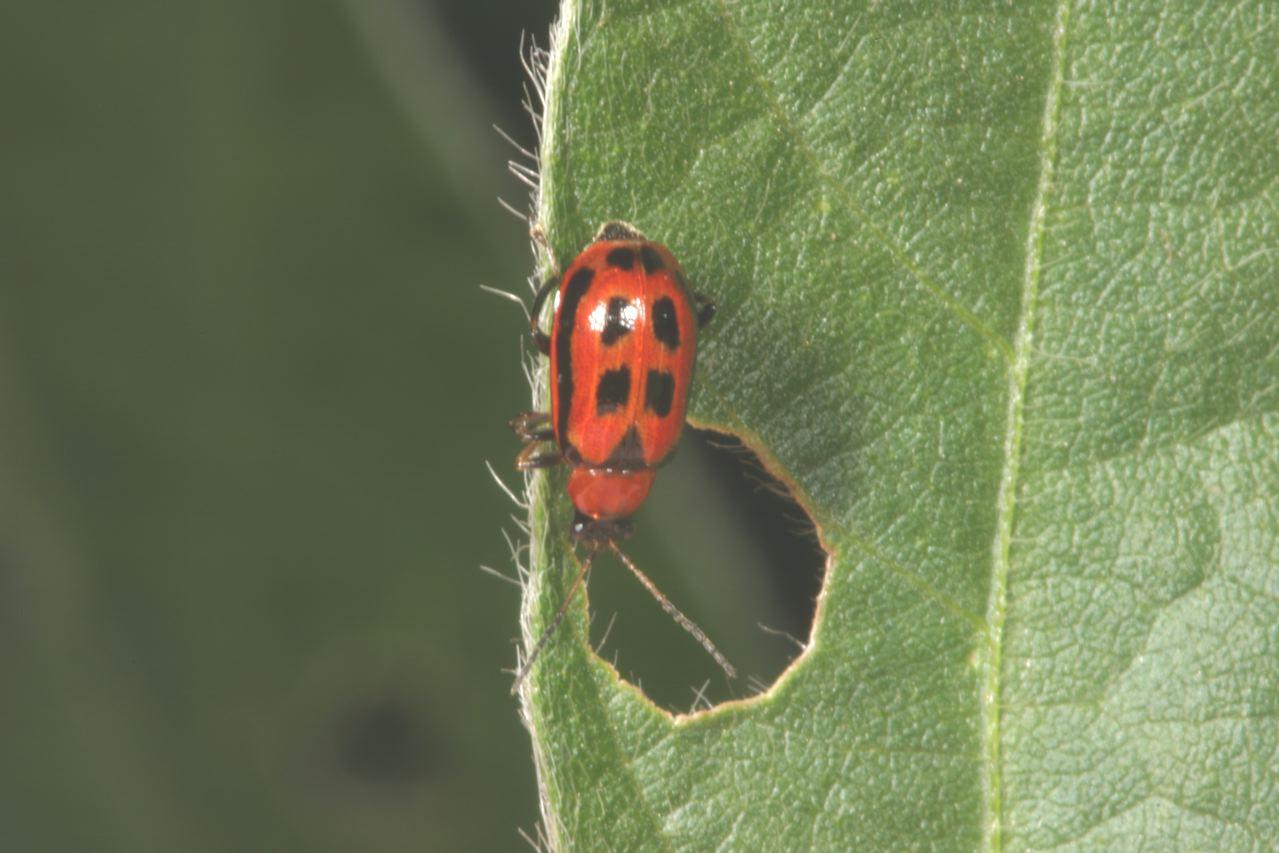Soybean Insects
Bean Leaf Beetle, Cerotoma trifurcata.

Adult beetle feeding on foliage.

Pod damage by bean leaf beetle.
The bean leaf beetle is red to light tan and about 1/4 inch long. The upper back is marked by six black spots near the midline and is bordered by a narrow black band. Insects react to disturbance by dropping to the ground and remaining motionless. Typically, bean leaf beetles chew oval holes in the foliage for most of the season, causing little economic damage. Border rows of emerging soybeans may support populations capable of causing localized economic losses. Severe cotyledon feeding, threatened destruction of the growing point, or populations of seven beetles per row-foot on soybeans with four or fewer nodes and 25 percent defoliation may justify limited-area treatments. In most years, late-season defoliation will not reduce yields unless 50 or more beetles per row-foot develop. Treatments may be justified if pod feeding results in the loss of three or more seeds per plant, if the pods are not completely dry, or if beetles are not yet leaving the fields. This beetle is found in all parts of the state and is known to transmit bean pod mottle virus. Research is ongoing to determine if lowering the treatment threshold would reduce the chance of plants becoming infected with this disease.
The seed treatments of thiamethoxam (Cruiser and CruiserMaxx) and imidacloprid (Attendant, Dyna-Shield Imidacloprid and Senator) are labeled for early season protection against bean leaf beetle injury. However, unless bean leaf beetle populations are a recurring problem locally, some other threat would be needed to justify the use of a systemic seed treatment.
Please refer to the most recent version of the Soybean Insect Management Guide for control options.
Page last updated 11/01/2013 by J.P. Michaud.